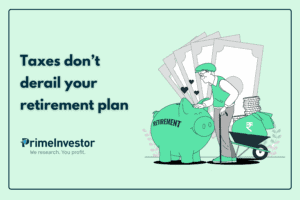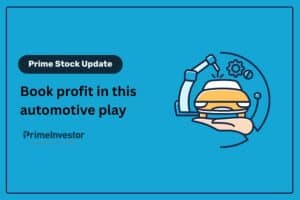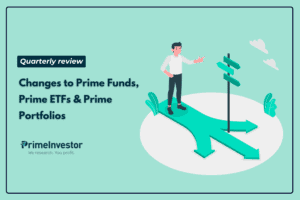
- #1 None of the debt funds I hold have delivered in the past 2 years. Should I continue with them?
- #2 But current returns of funds are still lower than the FD rates being offered!
- #3 You have given many debt strategies. Which one should I follow?
- #4 I hold longer duration debt funds from Prime Funds. I am worried about the severe underperformance for the past 2 years.
- #5 Should I go for target maturity funds you gave as a strategy or go with Prime Funds?
- #6 I have some lumpsum now to invest in debt. Where should I invest?
Please note that debt fund taxation has changed with effect from July 2024. Please refer to this article for updated tax rules.
#1 None of the debt funds I hold have delivered in the past 2 years. Should I continue with them?
It is true that debt funds have been a washout in the past 3 years. For an investment of 1-2 years, FDs would have marginally (although not significantly enough) returned higher than liquid and ultra short duration funds. But over a 3-year period, whether you held short duration, or medium duration funds such as corporate bond funds, the post tax return (capital gains) would have helped deliver better than FD returns. Of course, this does not provide much comfort as the fact remains that debt funds did not deliver.
The reason behind this is that for almost 2 years between May 2020 and April 2022, the RBI kept rates unchanged. Rate moves are necessary for bond strategies to work. When rates remain flat – and at historically low levels, at that – it is not a good thing. Why?
When rates fall, your bond prices (inversely correlated to yields) will rally. Longer duration funds gain more. When rates rise steadily (as they are now), you are able to get higher yields, with the impact more quickly felt in short duration funds.
But in a flat rate scenario and that too with low rates, you neither have higher yields to lock into nor is there a price rally to gain from capital appreciation. This is the simple reason why debt funds did not deliver.
This is why in November 2021, we specifically signaled opportunities in FDs (through small finance banks) that might actually be better for short duration or for temporary parking of money.
But the good news is that the sharp rate hikes since April 2022 and a spike in yields in the bond markets have led to yield to maturity (YTM) of funds moving up sharply. The graphs below will tell you how much the 1- & 3-year tenor government bond yields have moved.
That means the YTMs of the funds you hold would also go up. The table below tells you how YTMs of funds have moved up in just 3 months. If you take a current 1-year FD from SBI at 5.3%, the rate would still be lower than an ultra-short or money market fund’s yields even net of expenses. And remember while a fund can quickly readjust its yield and deliver higher if rates move up, with FDs you lock into them.
Hence, a switch out from debt fund to FD at this time is not the best thing to do unless you are taking exposure to some high interest rate bank FDs but within the safe Rs 5 lakh insurance threshold. Here again check your post tax return on such FDs based on your slab rate.
#2 But current returns of funds are still lower than the FD rates being offered!
When comparing debt fund and FD returns, the comparison is not apple-to-apple. You are comparing the past returns of the fund with the current rate of FD for the next 1 or 3 years. This is actually mentioned in the earlier question.
While mutual fund yields need not necessarily translate into returns, the direction of the move suggests that they are climbing sharply and at higher yields than FDs. So, remaining invested in your debt funds would let you earn from the rising yields and improve your return. However, if your intent is to look for cash flow or income, then you should consider bank FDs with higher rates or consider investing directly in G-Secs and SDLs from RBI’s Retail Direct platform. We have given such recommendations in the past. You will find them in our Prime Bonds page (for Growth subscribers only).
#3 You have given many debt strategies. Which one should I follow?
Our debt fund strategies were in 3 parts.
- Ahead of rate hikes, we suggested you invest in shorter duration/floating rate funds to ensure you gain faster when yields move up.
- As yields moved up, we gave medium duration and long duration calls, especially when we thought we were nearing the peak.
- For income seekers, we have been identifying and giving G-Sec and SDLs as well as high-risk private bonds (higher ticket size).
We have summed it all up here: https://www.primeinvestor.in/prime-strategy-time-to-lock-into-high-yields-and-how/
As an investor, whatever be the strategies we give out, there are only 2 things you need to link them to: one, whether you need income or just want to allow your money to grow. Two, your time frame.
If you need regular income, then your options remain combining decent-returning FDs and government options such as floating rate bonds from RBI, G-Secs or SDLs as yields are currently attractive. We have also updated Prime Deposits to add some better yielding options. Systematic withdrawal plans from debt funds are an add- option to these income-yielding options provided you first lock into them at present and give it some time to grow (given that fund portfolios have to readjust to new rates).
If your requirement is to let the money grow, then timeframe-based investing is the only answer you need. When we give you debt strategies, go for them only if it fits your timeframe requirement. Even if we say this is a great time to lock into high yields and suggest a 5-year passive debt fund, if your time frame is 2 years, it is best that you stay away! You would need to go only for our recommendations for under 2-year time frame. Do not break this rule. If your time frame is long, you can go for a mix of short and longer duration funds – essentially build a ladder across time frames with more exposure towards longer time frames.
When we give you strategies, our intent is not to make you exit your current debt funds (which you have invested in, which are otherwise good funds, and which meet your timeframe requirement) and reinvest in the strategy we outline. Use fresh money to invest in these strategies, or you can temporarily divert your SIP money here.
If you take this timeframe-based approach then you can apply your own filter on which debt strategy will suit you and which ones won’t. There is no single debt strategy that fits all. You will need to pick the one that fits your size 😊
#4 I hold longer duration debt funds from Prime Funds. I am worried about the severe underperformance for the past 2 years.
We discussed reasons for underperformance of funds in question 1. The pain of not seeing returns is very real for those who invested with a 1-2 year time frame and it is this segment of investors who have really been hit by the low-interest scenario.
But for those with a longer time frame of 5 or more years, there is still hope! When you invest in a fund which requires a minimum timeframe of holding, you should give the fund such time to perform. True, this did not work with ultra-short or even short duration in the last 2 years – but then no debt option would have worked for this timeframe!
With corporate bonds or constant maturity funds, you have the time to wait for the rate cycle to turn and returns improve. It is because we have seen a prolonged flat and low rate cycle, these funds are yet to perform. But given that we recommend a minimum 3 year or 5-year time frame for such funds, you can hope that the current yield up-move will help these funds deliver. In other words, you need to allow time for these funds to work. Do not stop SIPs in these funds or exit to reinvest in short-term funds/floating rate funds or any strategy we give.
#5 Should I go for target maturity funds you gave as a strategy or go with Prime Funds?
When we gave our call on 4 passive debt funds, the idea was to lock into the high yields prevailing in G-Secs and SDLs through such funds. They were meant for lumpsum investments and to suit the current rate scenario. They are suitable if:
- Your time frame matches the maturity of those funds
- You need some certainty (not guarantee) on the returns you can expect
- You plan to invest lumpsum and right away
If your time frame is longer or you are building a long-term portfolio with SIPs, then our medium and longer duration funds from Prime Funds will do a better job. The reason is this: one, a corporate bond fund or a banking & PSU fund can manage its average maturity actively based on the interest rate cycle. Two, they also provide you opportunities to make capital appreciation when rates eventually fall. As target maturity funds are held to maturity, there is little scope for capital appreciation. As always, make sure you go with our categories that fit your timeframe. In both the cases, volatility and mark-to-market losses during holding should be expected.
#6 I have some lumpsum now to invest in debt. Where should I invest?
As discussed in question 3, you need to map your timeframe to the fund you choose. If you have a longer time frame, a combination of short-term deposits from small finance banks, some short duration funds and medium duration funds will work if you don’t need any income. The reason why we suggest higher yielding bank deposits is to quickly shore up your current portfolio returns. Do note that they are not tax efficient, especially for time frames more than 3 years. For the medium duration funds, use the ones we gave in our passive debt fund strategy if your time frame matches that of the maturity of these funds. Else simply pick from Prime Funds.
If your time frame is short (say less than 2 years) then cut out the medium duration funds and stick to the other two mentioned above.






15 thoughts on “All your debt fund doubts, answered”
Does doing SIP in debt funds make sense OR Is it better to keep saving money every month in high yielding bank deposits and move sizeable lumsum amount to debt fund? I am asking from perspective of allocating money towards putting together emergency fund
SIPs in debt has been explained here: https://www.primeinvestor.in/varsity/should-you-run-an-sip-in-debt-funds-or-in-lumpsum/. There is no real benefit in investing in bank deposits and then shifting to debt funds. You can directly start investing in debt funds. – thanks, Bhavana
Congratulations for another well written article.However as staed in the article, I can appreciate that if rates were low during last two yrs the liquid and money market funds (the shorter duration funds did not deliver),but if yields were constant then there was no fall in NAV of medium and longer duration funds due to yield hikes.since their YTM was high ,accrual income at 6 %+ minimum should have been reflected in returns,bit even corporate bond category shows about 4% return .Why is that?could you kindly offer some insight ,which i am not able to fathom.
Yields did fall over a period sir. So naturally As yields moved up, returns fell (price falls) and dragged returns. Also, these are not buy and hold funds. Only if we held for the period of the avg maturity, you would still get the yield less expenses. So 1-2 year returns or even 3 year returns cannot be compared with the YTM.. thanks, Vidya
Hi, Point # 6 is not clear – Why would you suggest short-duration funds and short-term deposits for a LONGER time frame?
Longer duration will see multiple rate cycles. To reduce volatility in such periods and to provide some liquidity if needed we recommend it. it is not a must.
Vidya ,
Can we switch from a debt fund to a 20/30 year G-Sec in the present circumstances?
Unless you plan to hold it and use it to generate income, it would become a risky timing call as you need to know when to exit and whether the paper has liquidity. thanks, Vidya
No not advisable. Debt funds offer more tax efficient returns.
Do we have debt funds investing in foreign debt markets ? If so name few.
Hello Sir, none at present. Vidya
Hi,
Last week you gave a call to lock into higher yields via 10 year constant maturity funds. However, your suggestion in point #6 above on where to invest if I have a lumpsum amount now does not mention 10year constant maturity at all. Could you kindly help me understand this disconnect? Thanks.
There is no disconnect sir 🙂 We have mentioned if your time frame does not match with the passive funds (has to be exactly 5 years) simply stick to Prime funds and Constant maturity is very much part of Prime funds. thanks, Vidya
I am not able to find funds based on constant maturity time frame. Can you pls share the list.
Pl consider SBI 10 year constant maturity which is on our recommended list.
Comments are closed.